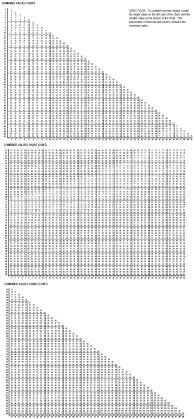XYZZXSJO2 – COLA and SAWW Increase Starts After the Date of Injury

Last week while Steve was at the Sacramento WCAB he heard about a recent case that held the COLA / SAWW adjustments and increases are calculated based upon the first January 1 following the date of injury. ((COLA = cost of living adjustment.)) ((SAWW = state average weekly wage.))
This case involving SIF (the subsequent injuries fund) is from the San Jose WCAB. The name of the case is “XYZZXSJO2 v. Subsequent Injuries Benefits Trust Fund, ADJ 1510738, SJO 0251902”. The name of the Applicant was anonymized to protect their identity. ((I hope to have a scan of this decision for you soon!)) ((David DePaolo of WorkCompCentral.com has graciously allowed me permission to offer you a copy of XYZZXSJO2 for download! Thanks David!))
Download a copy of XYZZXSJO2 now!
- XYZZXSJO2 v. Subsequent Injuries Benefits Trust Fund, ADJ 1510738, SJO 0251902 (With permission from WorkCompCentral.com – go read their site for more info on this case!)
Thus far the conventional wisdom has been that the COLA/SAWW increases are calculated starting with the first January 1 after life pension gets paid out. This is a tremendous change in the COLA/SAWW calculation of life pension.
Assuming a 1/1/2003 injury at exactly 70% permanent partial disability, there would be 426.5 weeks of permanent disability paid after the permanent and stationary date before the life pension gets paid out. This equates to 8.2 years from the permanent and stationary date that has, thus far, not been taken into account with life pension calculations to date. To put this in perspective, if someone had an injury on 1/1/2003 and became P&S on that same date ((Not likely.)) , the traditional method of calculating the life pension with COLA / SAWW increase would be too low by approximately 44%.
At the moment I’m finalizing a COLA / SAWW life pension calculator to determine what the future life pension rates are assuming a COLA / SAWW increase of 4.7% per year. If you’re interested in becoming a beta tester for this COLA / SAWW calculator for life pension increases, please drop me a line and ask for access.
Unfortunately, I don’t have a citation for the 4.7% COLA / SAWW increase, but I believe it to be the offiical average used by the DEU ((Disaiblity Evaluation Unit.)) to calculate commutations of COLA / SAWW increases and adjustments. If you have an official citation or document from the DEU, please drop me a line so I can include that citation here!



